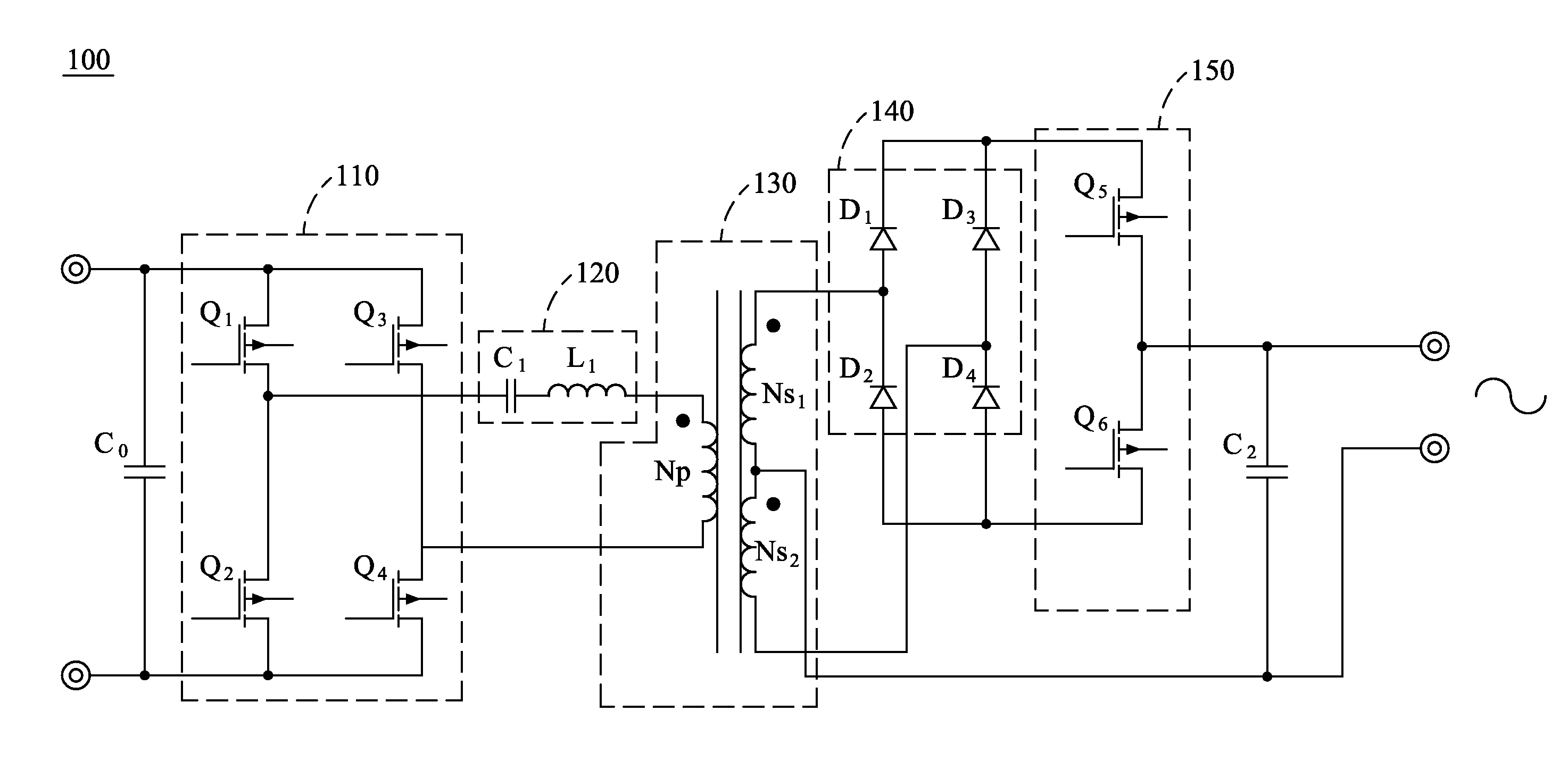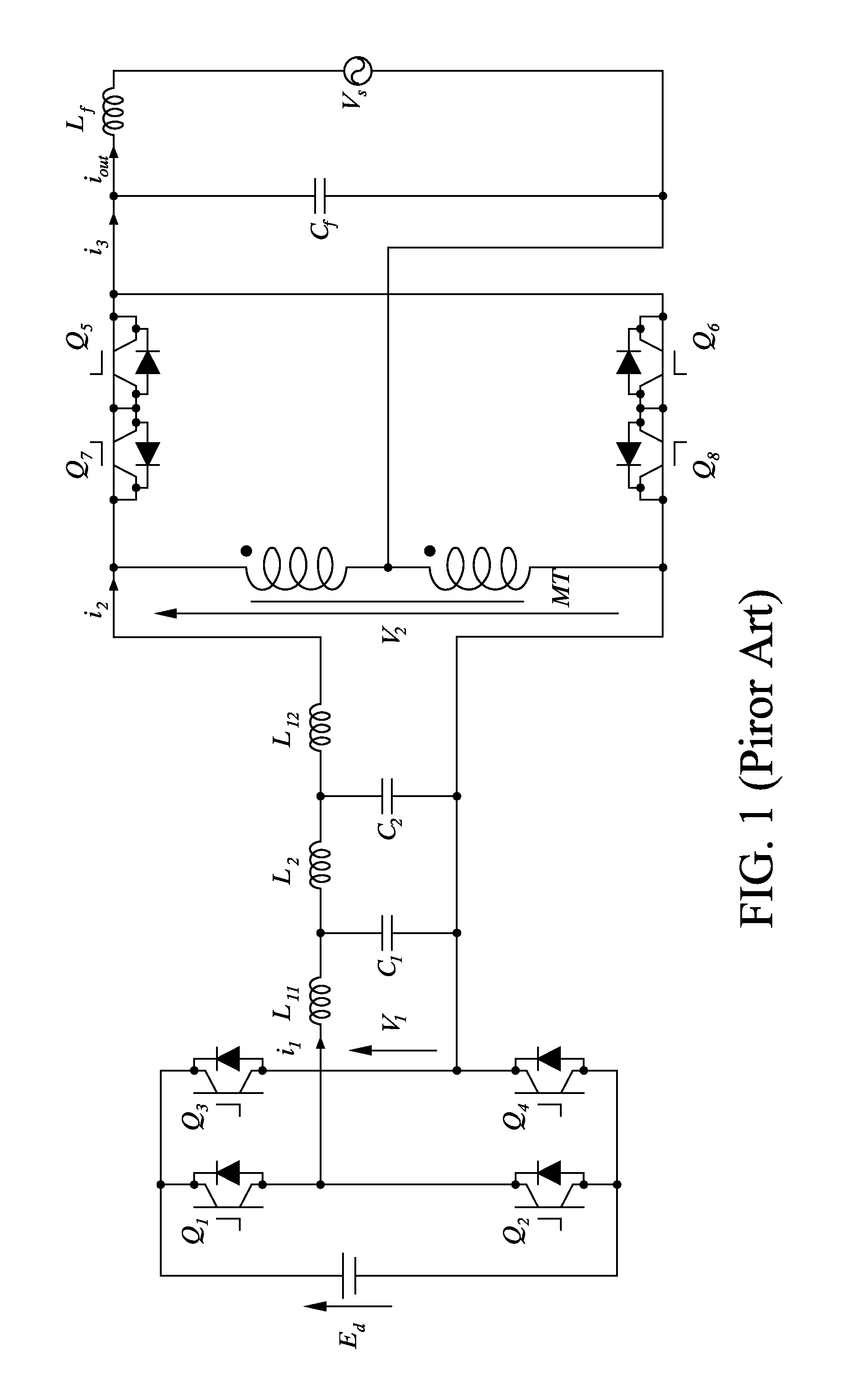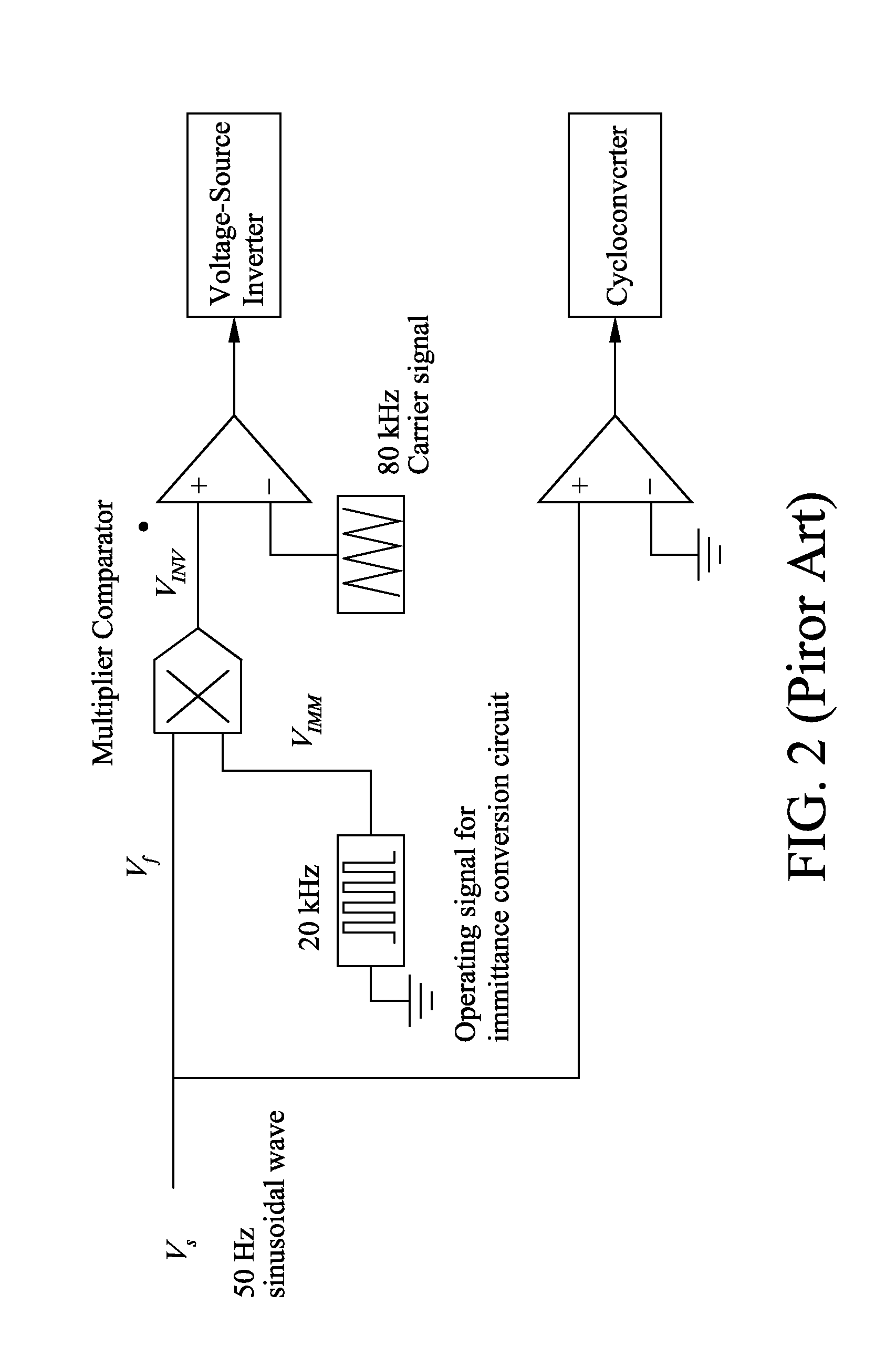Dc-to-ac power inverting apparatus for photovoltaic modules
a technology of photovoltaic modules and power inverters, which is applied in the direction of electric variable regulation, process and machine control, instruments, etc., can solve the problems of affecting performance, and the overall system output power may then decline significantly, so as to improve the conversion efficiency of dc-to-ac power inverters and reduce the volume of transformers , the effect of reducing the switching loss in the switch
- Summary
- Abstract
- Description
- Claims
- Application Information
AI Technical Summary
Benefits of technology
Problems solved by technology
Method used
Image
Examples
Embodiment Construction
[0017]For further understanding and recognizing the fulfilled functions and structural characteristics of the disclosure, several exemplary embodiments cooperating with detailed description are presented as the following.
[0018]In this present disclosure, a DC-to-AC power inverting apparatus is provided to combine with the photovoltaic or solar modules, so that an AC power of 100 to 200 Watts can be generated by each of the photovoltaic modules. Regarding a power generation system of solar photovoltaics, a power module of 100 to 200 Watts is preferable due to its low DC voltage and hence easy to be setup. Meantime, its small-scale capacitance and ease of modulization lead to advantages in the production cost, propagation loss of electricity, and conversion efficiency of photovoltaics.
[0019]The DC-to-AC power inverting apparatus have a circuit structure with two stages. The first stage includes a full-bridge inverter of high-frequency switching, a resonant circuit in series, an isolat...
PUM
 Login to View More
Login to View More Abstract
Description
Claims
Application Information
 Login to View More
Login to View More - R&D
- Intellectual Property
- Life Sciences
- Materials
- Tech Scout
- Unparalleled Data Quality
- Higher Quality Content
- 60% Fewer Hallucinations
Browse by: Latest US Patents, China's latest patents, Technical Efficacy Thesaurus, Application Domain, Technology Topic, Popular Technical Reports.
© 2025 PatSnap. All rights reserved.Legal|Privacy policy|Modern Slavery Act Transparency Statement|Sitemap|About US| Contact US: help@patsnap.com



